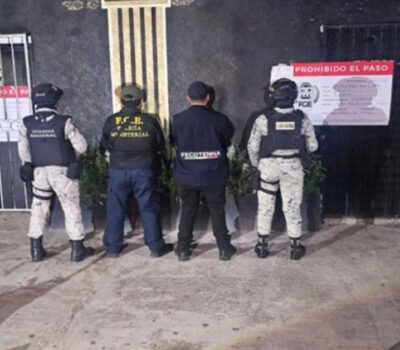Mexico has one of the highest rates of type 2 diabetes in the world, with 12% of the population suffering from the condition, compared with 9% of people in the United States. The Mexican government is so worried that it recently declared a state of emergency and introduced a tax on soda and junk food. But a new study shows that some Mexicans may be at higher risk for developing diabetes, no matter how healthy their diets are. The reason may be their Maya ancestry, which carries with it genetic variations associated with the disease.
“This is an important finding, because it could provide us clues about how to tackle the disease and plan public health strategies,” especially for Maya-speaking people, says María Guadalupe García, a geneticist at the Autonomous University of Yucatán (UADY) in Mérida, who was not involved in the research.
There may be fewer Maya today than at the culture’s height 3000 years ago, but they never disappeared. Today, Maya-speaking people constitute the second largest indigenous group in Mexico, with 800,000 people living mainly in the Yucatán Peninsula in the country’s southeast. Isolated culturally and geographically from other ethnicities for thousands of years, the Maya gene pool grew smaller and more homogeneous. As tends to happen with any isolated population, genetic variations that are rare in other groups became common among the Maya. Clinical biochemist Marta Menjívar of the National Autonomous University of Mexico (UNAM) in Mexico City wondered whether any of those variations might increase the Maya’s risk for diabetes, a growing problem in southeastern Mexico.
Menjívar’s team surfed through the genomes of 575 Maya individuals looking for 10 genetic variants that had been previously related to diabetes risk. They found that two are unusually common in the Maya, the researchers will report in next month’s issue of Gene.
The Maya’s relatively homogeneous gene pool made these variations easy to spot, explains Julio César Lara Riegos, a geneticist at UADY and the study’s lead author. But they probably aren’t limited to Maya communities. Most Mexicans are mestizos, with mixed European, African, and indigenous ancestry. The average mestizo has about 55% indigenous ancestry, Menjívar says. That makes studying the genetics of specific indigenous groups vital for understanding risk factors that could be present in the broader Mexican population, says Xavier Soberón, head of Mexico’s National Institute of Genomic Medicine (INMEGEN), who was not involved in the research.
It might also lead to personalized treatments for different Mexican ethnic groups and their mestizo relatives, says Ángeles Granados, a biochemist at UNAM and a co-author of the Gene paper. She is already studying how the Maya’s unique genetic profile may speed up the work of certain enzymes, leading to rapid elimination of diabetes medicines from their bodies. “This could explain at least in part why some diabetics are not well medicated,” she says.
Understanding that process could assist doctors in knowing when to reduce or increase their patients’ doses of these drugs. It could also help Granados and other researchers develop medicines that resist breaking down so quickly and, therefore, would be more effective for Maya patients, as well as for anyone else who shares that particular genetic variant.
But other researchers remain skeptical. “We can’t start talking about improved treatments for Maya because diabetes is a very complex disease, involving lots of yet unknown risk factors, says Teresa Tusié Luna, a human geneticist who studies diabetes at the Salvador Zubirán National Institute of Health Sciences and Nutrition in Mexico City. And not all those risk factors are genetic. Mexican genomes could not have changed in just 20 years, yet there are more diabetes cases in the country today than a few decades ago. That means modern lifestyle may have something to do with the increase, but Tusié Luna warns that we are just starting to explore how both genetic and environmental components interact with each other when it comes to diabetes.
Lorena Orozco, another human geneticist at INMEGEN, worries about the methodology used in the study. “It is difficult to associate diabetes risk to Maya because our size samples will always be small, and that’s an intrinsic problem of working with ethnic groups.” Does this mean we should stop studying them? “No,” Orozco says, “we just have to be careful.”
Mexico has one of the highest rates of type 2 diabetes in the world, with 12% of the population suffering from the condition, compared with . . .











